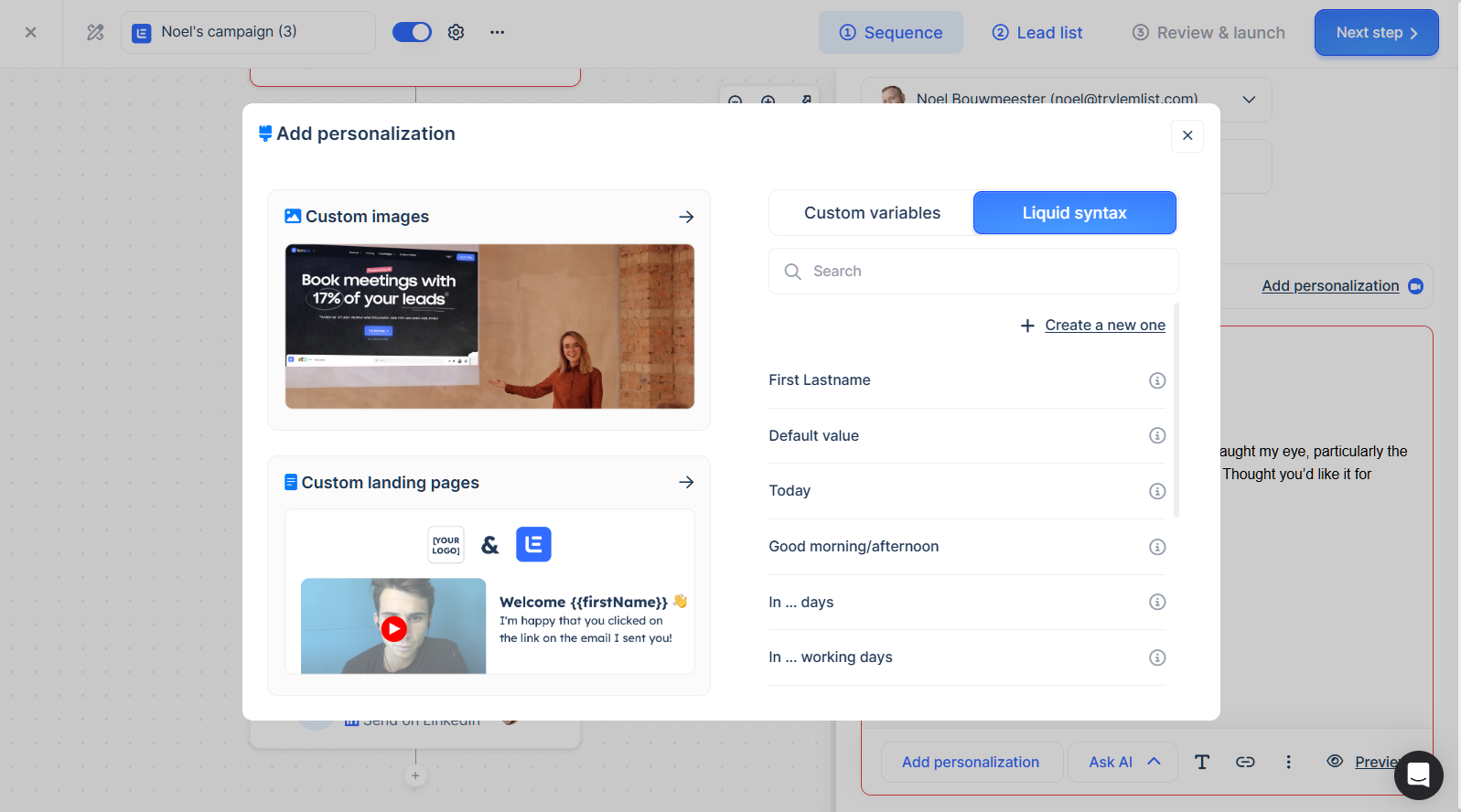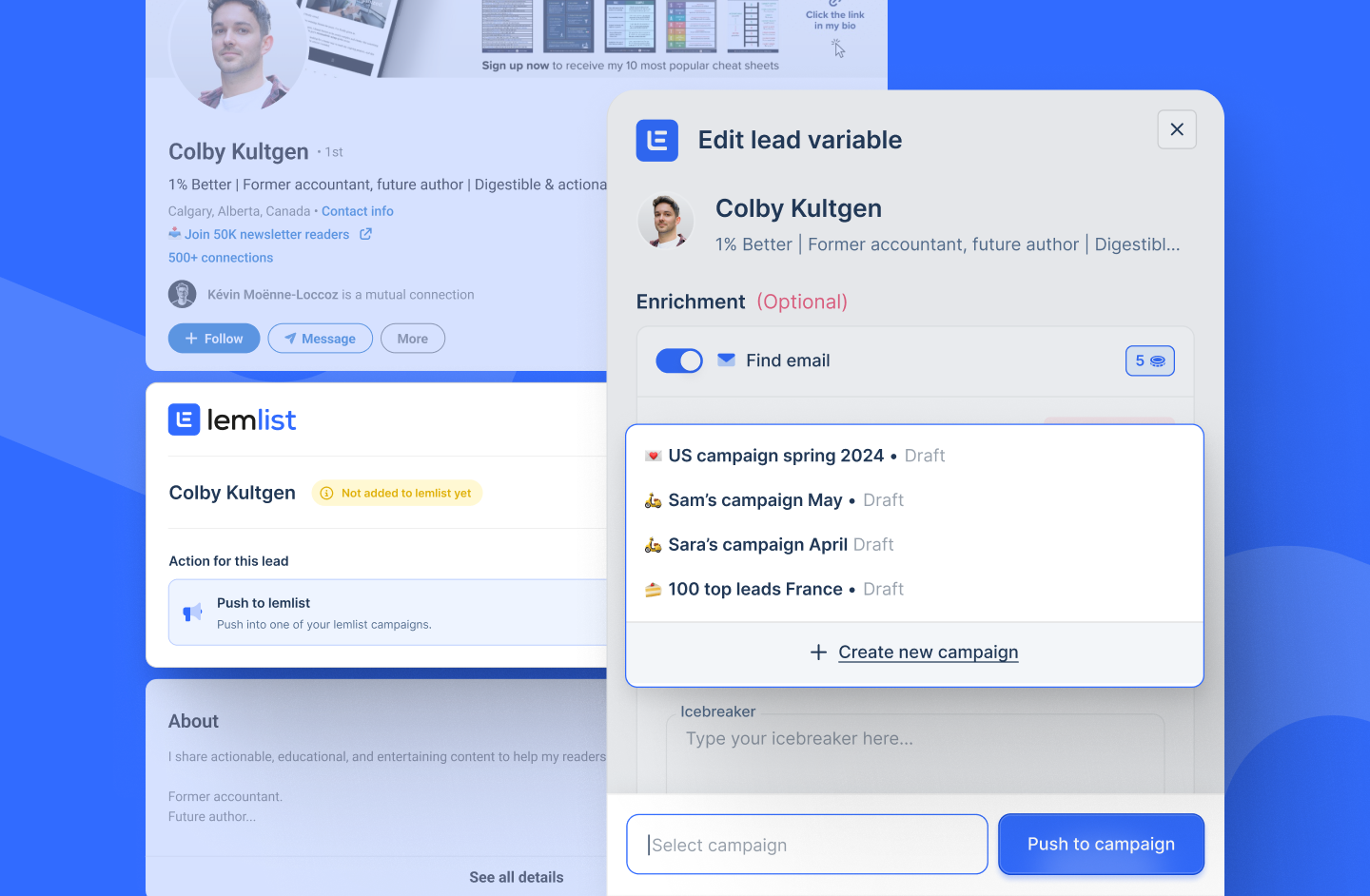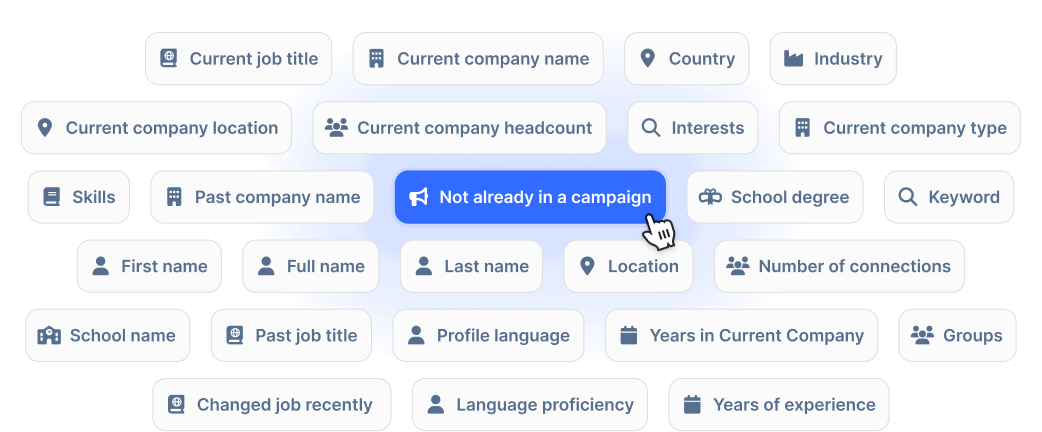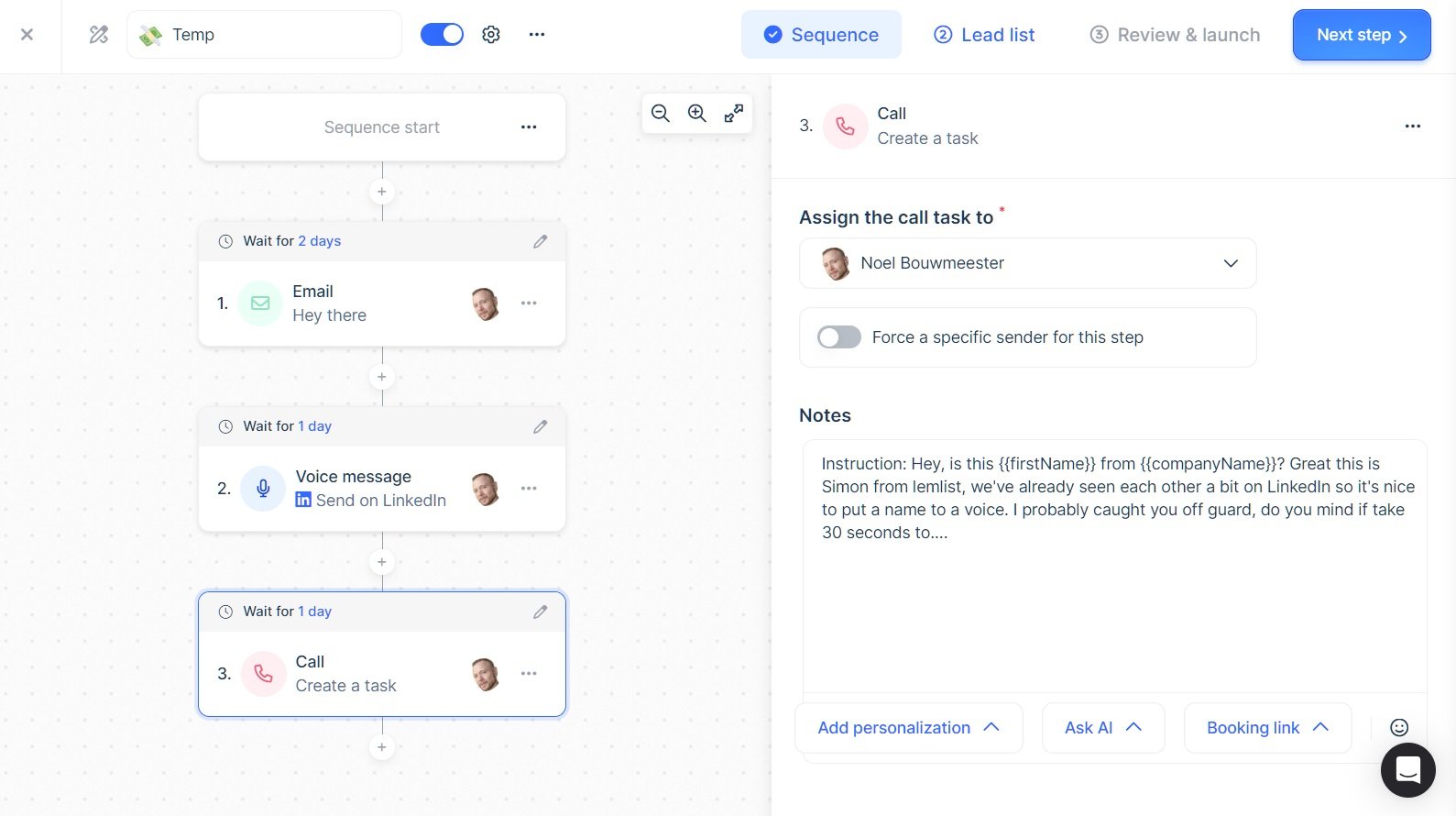Do you think about starting a business in lead generation?
If you have sales and marketing skills but don’t want to create a product…
Then, starting a lead generation business may be a great way to use your expertise and generate substantial income by connecting companies with quality leads.
Below, we’ll share how to start a lead generation business, its challenges, and how to actually find leads and clients. ⬇️
What is a lead generation business?
A lead generation company specializes in finding potential customers (leads) for other businesses.
The goal of lead generation is to collect information from people who have shown some level of interest in a product or service.
The leads are then sold to other companies that can convert them into paying customers.
These businesses pay handsomely for these leads because it means that they don’t have to spend time and resources looking for leads themselves.
Challenges of lead generation businesses
Starting a lead generation business has a low barrier to entry.
However, just as with any business, it comes with its own challenges.
1. Cost
Even for starting a one-person lead generation business, you’ll need some money to get started for:
- A domain
- A professional website
- Hosting
- Subscriptions to lead generation tools
The cost of starting a lead generation business increases exponentially for larger-sized lead generation agencies.
2. Lack of lead quality
Businesses purchasing leads expect to receive good quality leads.
Adequately filtering out bad leads requires ongoing optimization and refining of the lead generation process.
3. Competition
Because of lead generation’s low barrier of entry, it has become a competitive field.
One of the challenges lead generation businesses have to deal with is standing out among their competitors.
Differentiating your service and niching down to create a unique value proposition is increasingly important in the lead generation business.
4. Laws and regulations
Being aware of relevant laws and regulations is essential when starting a lead generation business.
Applicable laws could include:
- GDPR
- CAN-SPAM
- CCPA
Consult a lawyer before starting lead generation, as failing to do so could result in significant fines.
How to generate leads for your clients
To start a lead generation business, you need to be able to find, well… leads!
There are several methods to generate leads. We’ll discuss some of them.
Don’t just deliver leads — obsess over making them successful. Understand their business model, their ICP, their ideal personas. The better you understand their world, the more valuable your work becomes. That level of customer obsession is what builds trust, long-term partnerships, and referrals.

Co-Founder @Scalantec
1. Cold email ❄️
When done right, cold email can be highly effective for generating leads.
It allows you to reach out to a specific set of customers and filter your contact list based on factors like industry, job title, and much more.
In other words, you start with a targeted list and then take the most responsive leads and sell them to your clients.
Since everyone with an email address has already received thousands of cookie-cutter outreach emails, it’s important to personalize each one.
Fortunately, that doesn’t mean you have to write each email by hand.
Cold outreach tools like lemlist can do most of the work for you.
lemlist allows you to run highly personalized multichannel outreach campaigns.
lemlist allows you to personalize at scale like no other outreach tool. Your emails will look just like a manually written email.
With lemlist, you can use the usual (custom) text replacements, but it goes much further than that.
Take its feature liquid syntax, for example. It allows you to display different content based on specific conditions, such as the recipient’s location, interests, or campaign interactions.

2. Get leads from LinkedIn
If you’re looking for leads for a B2B audience, you can’t go wrong with LinkedIn. It’s the best social media platform for generating leads.
With LinkedIn Sales Navigator, you can run more advanced searches than with regular LinkedIn search. It allows you to zoom in on the most relevant leads.
LinkedIn Sales Navigator even recommends leads based on your saved searches and activity, bringing you new leads you might not have discovered on your own.
Once found, you can quickly push the leads to any lemlist campaign with lemlist’s Chrome extension.

With the leads in your campaign now, you can start your outreach.
3. SEO (Search Engine Optimization)
Have SEO skills? Can you rank a website on a specific topic?
If so, you can capture leads through sign-up forms on your website.
If people sign up, you know those leads are already pre-qualified and probably in the market for your client’s product or service.
Obviously, it takes time to build a website, get it ranked, and maintain those positions, but in terms of monetary costs, you can’t beat having a lead-capturing website.
4. Leads databases
One of the easiest ways to find leads is through a lead database.
Now, you might be asking: why wouldn’t potential clients use such databases?
The answer is simple: your clients want ready-to-go leads delivered to their “doorstep.” They certainly don’t want to spend hours per week filtering and tweaking lead databases’ search results.
lemlist comes with a 450M+ People database. Its advanced filters allow you to find the specific leads your clients need.
You can use lemlist’s free plan and find up to 100 verified leads or 25 phone numbers each month. While you can enjoy the free plan for as long as you want, you can buy credits to find more leads online.

Best of all? You can add them to any lemlist campaign with just one click.
Hop over to the lemlist academy to learn how to use lemlist’s People database.
How to find clients for your lead generation business
1. Define your offer
The first step to finding clients is defining your offer.
Start with a narrow niche focus instead of being a general lead supplier. This allows you to get a foot in the market’s door.
For example, you could target SaaS companies in a specific industry and then expand to other industries as you grow.
2. Define your ICP
Your Ideal Customer Profile helps you define who your customer is.
Knowing their paint points, where they hang out, and what kind of language they use helps refine your marketing.
Our AI-powered ICP generator will help you generate an ICP in just a few minutes, giving you an advantage over the competition, which might take weeks to develop one.
3. Use Social Media
Social media, especially LinkedIn, is a great place to find clients.
Now, in addition to looking for clients with Sales Navigator, I’m also talking about setting up actual profiles and content that attract clients.
How?
- Share how you find leads
- Share your marketing experiments
- Share insights on industry trends
- Create infographics on industry stats
- Like and comment on posts of your potential clients
The first four action items above demonstrate your expertise and commitment to your industry; the last one helps you gain visibility with potential clients.
4. Outreach
You can use it to uncover high-quality leads and to find clients to whom you can sell them.
Armed with your ICP and unique offer, you can start to find leads similarly to how you would find leads for other companies.
Then, use a tool like lemlist for the actual outreach. With lemlist, you can reach out to your leads using a multichannel approach.
lemlist allows you to bulk send hyper-personalized outreach emails that look like real human emails.
Instead of just email outreach, lemlist also lets you engage your leads through other channels like:
- LinkedIn (Invitations, chat and voice messages)
- Cold calling
- Manual steps with reminders (Comment post, like post, etc. The sky’s the limit.)

How much should you charge for leads?
Most lead generation businesses have one of two ways to charge for leads:
- Average Contract Value (ACV) – Average price a client pays for a set of leads or for access to a lead generation platform (think Apollo, Rocket Reach, or even lemlist’s leads database).
- Cost Per Lead (CPL) – Clients pay a predetermined amount for each lead.
The actual cost per lead, be it through ACV or CPL, depends on your industry and how qualified the lead is.
To find out how in-demand your industry is, check the pay-per-click costs for a main keyword in your niche.
Also, run searches for main keywords in other industries to compare the costs per click. This will give you an excellent idea of how much you can charge for leads in your industry.
Naturally, a more competitive and in-demand industry will command higher prices, sometimes up to several hundred dollars per lead.
One thing is for sure: understanding the competitive landscape is essential for accurate pricing, and it may be the deciding factor between your business’s success and failure.
Stand out from your competition
Lead generation is a field with a low barrier to entry.
However, that automatically means there’s a lot of competition.
Differentiating yourself is crucial to your success, especially in the beginning when you’re still making a name for yourself.
A simple way to set yourself apart is the ability to find high-quality leads quickly.
lemlist AI-powered leads database allows you to do just that. You can even reach out to the leads with a single click.
Sign up for a free 14-day lemlist trial here.
SEO content writer helping B2B brands grow - Working remotely from sunny Costa Rica

